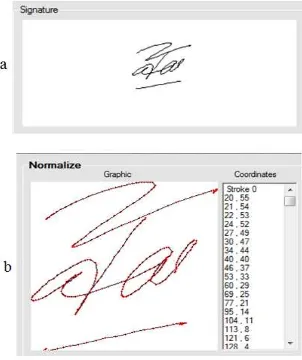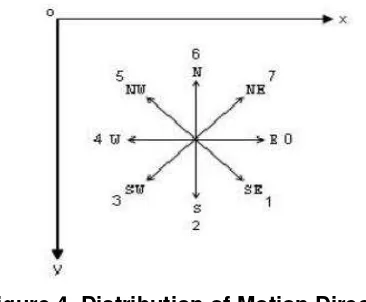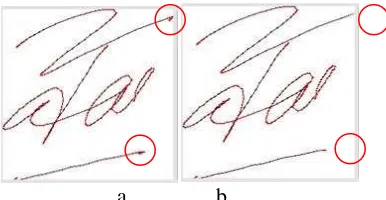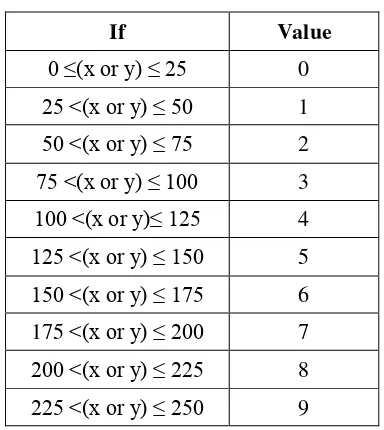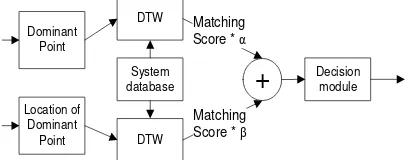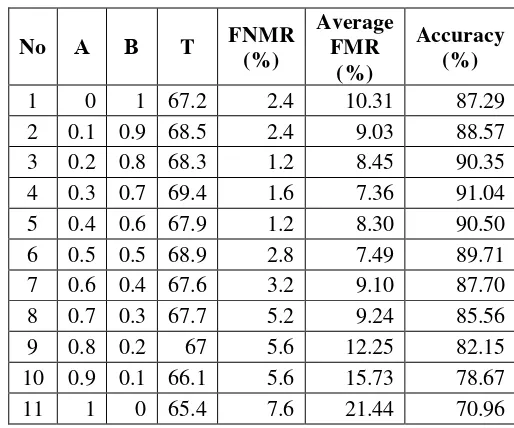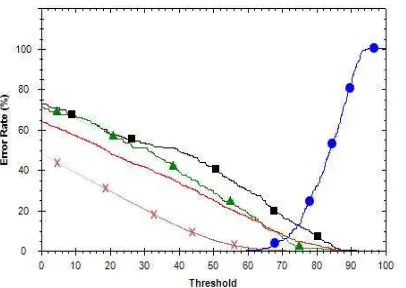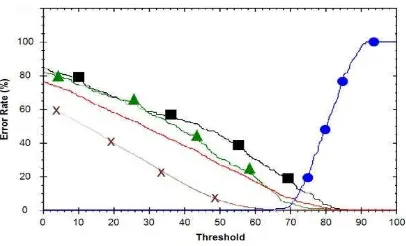IJSIA
International Journal of Security and Its Applications
Vol. 8, No. 1, January, 2014
S
CIENCE &
E
NGINEERING
R
ESEARCH
International Journal of Security and Its Applications Vol.8, No.1 (2014)
i Editor-in-Chief of the IJSIA Journal
Jemal. H. Abawajy, Deakin University, Australia
Prof. Bharat Bhargava,
Professor in Department of Computer Science at Purdue, USA
General Information of IJSIA
Bibliographic Information
ISSN: 1738-9976
Publisher: SERSC
Science & Engineering Research Support soCiety
Contact Information
Science & Engineering Research Support soCiety
Head Office: 20 Virginia Court, Sandy Bay, Tasmania, Australia
Phone no.: +61-3-9016-9027
Email: [email protected]
Journal Topics
IJSIA aims to facilitate and support research related to security technology and the applications. The topics covered by IJSIA include the following:-
Basic Topics:
Security technology
Security products or systems
Secure installation, generation and operation
ii
Applications using Security Engineering:
Access Control
Ad Hoc & Sensor Network Security
Applied Cryptography
Authentication and Non-repudiation
Cryptographic Protocols
Denial of Service
E-Commerce Security
Identity and Trust Management
Information Hiding
Insider Threats and Countermeasures
Intrusion Detection & Prevention
Network & Wireless Security
Peer-to-Peer Security
Privacy and Anonymity
Security Analysis Methodologies
Security in Software Outsourcing
Systems and Data Security
Ubiquitous Computing Security
Advisory/Editorial Board
Ahmet Koltuksuz, Izmir Institute of Technology, Turkey
Ajith Abraham, Norwegian University of Science and Technology, Norway
Alessandro Piva, University of Florence, Italy
Audun Josang, School of Software Engineering and Data Communications,
Australia
Beniamino Di Martino, Second University of Naples, Italy
International Journal of Security and Its Applications Vol.8, No.1 (2014)
iii
Brian King, Indiana University Purdue University Indianapolis, USA
Chin-Tser Huang, University of South Carolina, USA
D P.Vakharia, S.V.N.I,T, India
Damien Sauveron, XLIM Laboratory, France
Debnath Bhattacharyya, Heritage Inst. of Technology, India
Dharma P. Agrawal, University of Cincinnati, USA
Dong Young Lee, Myoungji University, Korea
Edgar Weippl, Vienna University of Technology, Austria
Enrico Zio, Polytechnic of Milan, Italy
Frank Piessens, Katholieke Universiteit Leuven, Belgium
George Mohay, Queensland University of Technology, Australia
Geyong Min, University of Bradford, UK
Gildas Avoine, Massachusetts Institute of Technology, USA
Giovanni Cagalaban, Hannam University, Korea
Golden G. Richard III, University of New Orleans, USA
Hai Jin, Huazhong University of Science and Technology, China
Hua Liu, Xerox labs, USA
Indrajit Ray, Colorado State University, USA
Javier Garcia-Villalba, Complutense University of Madrid, Spain
Javier Lopez, University of Malaga, Spain
Jayaprakash Kar, Al Musanna College of Technology, Sultanate of Oman
Jean-Jacques Quisquater, Universite catholique de Louvain, Belgium
Jeng-Shyang Pan, National Kaohsiung University of Applied Sciences, Taiwan
Jeno Bartalos, ICST, Europe
Jianhua Ma, Hosei University, Japan
Johnson Thomas, Oklahoma State University, USA
Jordi Castell, University of Wisconsin, USA
iv
Jun Bi, Tsinghua University, China
Kamaljit I. Lakhtaria, Atmiya Institute of Technology & Science, India
Kamaljit I. Lakhtaria, Atmiya Institute of Technology and Science, India
Karl Goeschka, Vienna University of Technology, Austria
Katrin Franke, Fraunhofer Institute, Germany
Kouich Sakurai, Kyushu University, Japan
Kousalya G, Lealta Media, India
Kyoungseok Kim, Chungbuk National University, Korea
Laurence T. Yang, St. Francis Xavier University, Canada
Maricel Balitanas-Salazar, University of San Agustin, Philippines
Marjan Kuchaki Rafsanjani, University of Kerman, Iran
N. Jaisankar, Manonmaniam Sundaranar University, India
N.Jaisankar, SCS/VIT university, India
R. Ravi, Kalasalingam University, India
Randy Tolentino, Hannam University, Korea
Rosslin John Robles, University of San Agustin, Philippines
S.U. Hwang, Hongik University, Korea
SeokSoo Kim, Hannam University, Korea
Shiguo Lian, France Telecom R&D Beijing, China
Suhas J Manangi, Microsoft India, India
Sukumar Senthilkumar, Universiti Sains Malaysia, Malaysia
Tao Gong, Donghua University, China
Yang-sun Lee, Seokyung Unviersity, Korea
Yu-Chen Hu, Providence University, Taiwan
International Journal of Security and Its Applications Vol.8, No.1 (2014)
v IJSIA is indexed by:
EBSCO
ProQuest
ULRICH
DOAJ
OpenJ-Gate
SCOPUS
Cabell
EI Compendex
Editorial Secretary
International Journal of Security and Its Applications Vol.8, No1. (2014)
vii
Foreword and Editorial
International Journal of Security and Its Applications
We are very happy to publish this issue of an International Journal of Security and Its Applications by Science and Engineering Research Support soCiety.
This issue contains 39 articles. Achieving such a high quality of papers would have been impossible without the huge work that was undertaken by the Editorial Board members and External Reviewers. We take this opportunity to thank them for their great support and cooperation.
The paper “An Improved Reconstruction methods of Compressive Sensing Data Recovery in
Wireless Sensor Networks” establishes suitability compressive sensing (CS) to address some challenges using WSN. Through the improvement of reconstruction algorithm and the experimental demonstration, the application of this method could ensure the accuracy of the data as well as balance the network energy consumption.
Paper “Influence of HRM Practices on Privacy Policy Compliance Intention: A Study among
Bank Employees in Korea” investigates human resource management practices related to in-formation privacy policy compliance by individuals in banks industry. The results of this survey of 257 bank employees in Korea indicate that certain human resource management practices within organizations (referred to as developmental-oriented appraisal, externally or internally equitable reward, selective staffing and training for career development) contribute to a social exchange process. This process is distinct from the formal compliance training procedures and is shown to influence employee perceptions of social exchange to engage in compliance activities, which contributes to behavioral intention to comply with information privacy policies.
In the paper “Modeling and Analysis of SMER Constraints Violation in IRBAC 2000 Model Based on Colored Petri Nets”, proposes a novel method based on colored Petri nets to model and analyze IRBAC 2000 model so as to detect static mutual exclusive roles (SMER) constraints violation. The necessary and sufficient conditions for SMER constraints violation in the IRBAC 2000 model are demonstrated. A graphical detection model based on Colored Petri net of SMER constraints violation is presented and then a more complicated case study is used to illustrate the efficiency of the proposed model.
viii
The Authors of “A TPSAC Model and Its Application to Mechanical Cloud Simulation” proposed a tree proxy-based and service-oriented access control (TPSAC) model. In the TPSAC model, a multilevel inherited meta permission and a multi-tree child-sibling linked list were adopted to separate the permission loading function and the permission distribution function to achieve a multi-granularity and quantized access control with the cloud simulation.
Paper “An Improved Dominant Point Feature for Online Signature Verification” introduced a new technique to improve dominant point feature system based on its location for online signature verification. Dynamic Time Warping is used to match two signature features vector. The performance of system is tested by using 50 participants. Based on simulation result, system accuracy without presence of the simple and trained impostors is 99.65% with rejection error is 0% and acceptance error is 0.35%. While the current systems are faced with the simple and trained impostors, system accuracy became 91.04% with rejection error is 1.6% and an average of acceptance error is 7.36% with details as follows; acceptance error is 0.08%, acceptance error of simple impostors is 4.4%, and acceptance error of trained impostors is 17.6%.The improved feature within fusion is produce better accuracy significantly than dominant point feature..
In the paper “Development of Object-Oriented Analysis and Design Methodology for Secure Web Applications” suggests an object-oriented analysis and design methodology emphasized in the security for secure web application systems from the requirement analysis to implementation. The object-oriented analysis and design methodology adopts UMLsec, the modeling language with an emphasis on security for the requirement analysis and system analysis and design with regard to security. And for its implementation, RBAC(Role Based Access Control) of servlet from Java EE technologies is used..
The paper “Freshness Consideration of Hierarchical Key Agreement Protocol in WSNs” propose two freshness preserving hierarchical key agreement protocols over the hierarchical WSNs, named as HKAP_FP. The two HKAP_FPs inherit advantages from Kim’s protocols and well suited to the hierarchical WSNs.
The paper “A Novel Approach to Design the Fast Pedestrian Detection for Video Surveillance System” proposes a multi-scale handling method for the fast pedestrian detection, using the tactics detection from sparse to dense. The pedestrian detection method consists of four parts functions, mainly pedestrian statistics and intrusion detection, pedestrian tracking and pedestrian flow statistics. All these modules are introduced with its details about design and implementation. In Addition, the proposed multi-scale handling method can be applied into most of object detectors to improve their recognition speed.
The Authors of “Securing E-Governance Services through Biometrics” discusses the role of biometric authentication in e-governance environment to provide services efficiently and securely over the internet. The success of such mechanisms relies on effective identity authentication. While traditional security measure such as PINs and passwords may be forgotten, stolen, or cracked, biometrics provides authentication mechanisms based on unique human physiological and behavioral characteristics that can be used to identify an individual or authenticate the claimed identity of an individual, but cannot be easily duplicated or forged.
International Journal of Security and Its Applications Vol.8, No1. (2014)
ix analyzes the threat factors through a total study of network packets circulated in realtime and applies various security functions to cope with intelligent security threats in the future.
The paper “A Reliable File Protection System Based on Transparent Encryption” presents a novel double cache file filter driver based on transparent encryption, called as DBFD. In order to boost security of data, that is controlled by the file filter driver. The DBFD overcomes the limitation of double cache in the file system kernel in windows operating system and used the transparent encryption method to protect the data security. To evaluate DBFD, it used Iometer as the measurement tools to measure performance.
Paper “Sensitive Semantics-Aware Personality Cloaking on Road-Network Environment” presents a novel personality privacy-preserving cloaking framework for the protection of sensitive positions on road-network environment. In the scheme, a Voronoi-partition graph is first learned from an urban network, and a Dominance Date Center (DDC) is introduced to
take charge of the vertex’s Voronoi-partition (dominance space) data. Then, the θ-security semantics is introduced to measure the degree of sensitive semantics leakage. Thus, a lightweight agent running in the client can contract with DDC and process the sensitive semantics-aware cloaking algorithm to generate a cloaking region to meet K-anonymity and
θ-security semantics.
In the paper “Secured Session Key Agreement Protocol for Iris Cryptosystem Using Customized Elliptic Curve Cryptography”, suggests a new authentication protocol using Customized Elliptic Curve Cryptography to improve the reliability of E-Passport.
The paper “Towards an Efficient and Secure Online Digital Rights Management Scheme in Cloud Computing” present a secure key distribution protocol based on proxy re-encryption, which protects the confidentiality of content encryption key, and reduces the work of key management in the cloud, and also supports domain key to realize user domain management. In addition, it develop a prototype system with Google cloud storage APIs based on the proposed scheme, and the implementation and comparison results show that the proposed scheme satisfies the requirements of online media content protection in cloud computing.
The Authors of “Security Assessment for Key Management in Mobile Ad Hoc Networks” presents most problems of securing key management in ad hoc networks. It presents a survey of different types of key management protocols in wired networks and in ad hoc networks. It presents the most common kinds of attacks in ad hoc networks. A new efficient approach is proposed. It is based on dividing the members into clusters. This scheme assumes a maximum allowed number of members in each cluster. This reduces the required number of encryption and decryption operations for each join operation in the cluster.
Paper “Evading Anti-debugging Techniques with Binary Substitution” propose a Evading Anti-debugging techniques method that can avoid anti-debugging techniques in binary files, and showed several samples of debugging applications and how to detect and patch anti-debugging techniques in common utilities or malicious code effectively.
The paper “Knowledge Based Secure Data Streaming in Virtual Environment” aims to implement the concept of Knowledge Cube generation for securely transfer data with the help
of Horizontal Aggregation method in virtual environment. The concept of ‘Knowledge Cube’
x
further interpreted so as to execute complex queries during any data retrieval process in both physical and virtual environment.
The paper “A Study of Security Requirement Demand Survey Analysis on Manufacturing Industry” conducted a study on the security requirement demand research for establishing response strategy on technology leakage possibility and leakage route by analyzing the business process of automobile industry. In conclusion, the biggest difficulty in sharing information of automobile industry was inability to inspect the status of technology protection of outside organization.
In the paper “Fault Diagnosis Research of Submarine Casing Cutting Robot for Abandoned Oil Wellhead”, evaluated fault diagnosis research of the cutting robot using the Bayesian network. A methodology of transforming the fault tree model into Bayesian network model is used. The fault tree model is established simply and conveniently. Bayesian network can address interesting questions allowing both forward and backward analysis. Combining the merits of two methods, the causes of failures, the occurrence probabilities and the importance of various components are analyzed based on the Netica software.
Paper “Study on Accurate Calculating the Riskof the SCADA” proposes accurate and concise risk calculation due to the development of IT industry With the advent of the Internet as a connection point is always exposed to hacking threats. As a result, if cyber attacks occur in the SCADA system as a national major economic and social problems will occur.
In the paper “Android Mobile Application System Call Event Pattern Analysis for Determination of Malicious Attack”, analyzed the normal system call event patterns from the most highly used game app in the Android open market, and the malicious system call event patterns were also analyzed from the malicious game apps extracted from 1260 malware samples distributed by Android MalGenome Project. Using the Strace tool, system call events are aggregated from normal and malicious apps.
The paper “A survey of Cyber Attack Detection Strategies” introduces the overview of the state of the art in cyber attack detection strategies. Cyber terror attacks and cyber crime attacks may move over virtual networks and can get every home. Nowadays, it consider the homeland security field however it set the cyber attack detection area the highest priority in the research.
The Authors of “Secure Data Management Scheme using One-Time Trapdoor on Cloud Storage Environment” suggests a safe scheme for data management by using a one-time trapdoor so that an unethical server manager or attacker cannot infer the content of the search and the data through the queries when the same user searches the same keyword.
Paper “Performance of Converged Secure Socket Layer and CMVP Cryptographic Modules”
presented convergence method of CMVP and SSL(Secure Socket Layer) for web services and performance results of the method. And NIST documents also require CMVP-approved modules for smart grid networks.
International Journal of Security and Its Applications Vol.8, No1. (2014)
xi difference between deception and reliable behavior by means of Ebbinghaus forgetting curve. Furthermore, it constructed an online crowdsourcing experiment platform to verify the validity of the method.
The paper “Risk Prediction of Malicious Code-Infected Websites by Mining Vulnerability Features” proposed a process involving feature modeling and data-mining techniques. In addition, the huge number of alarms burdens mangers while executing in-time-response duties. However, such tools only warn users about suspicious sites and do not provide clues as to why the sites were hacked and which vulnerability was responsible for the attack. It has proposed a data-mining process to discover significant vulnerabilities that strongly affect the security of malicious-code-detected websites.
The paper “The Design and Implementation of Collaboration Service Integration Platform Based on Context-Aware Role Based Access Model” designs and implements the Collaboration Service Integration Platform (CSIP) which combines Business Process Model and Notation (BPMN) and Context-Aware Role-Based Access Control (CA-RBAC) model. The context information is considered to enhance RBAC and adjust the authority of user role dynamically. For implementation, the logic gateways and connectors are added in the tasks and workflows for adjusting the authority dynamically. The right information can be accessed by the right user in CSIP based on CA-RBAC.
The Authors of “New Construction of Even-variable Rotation Symmetric Boolean Functions with Optimum Algebraic Immunity” studies the construction of even-variable rotation symmetric Boolean functions with optimum algebraic immunity.
Paper “Dynamic Multi-keyword Top-k Ranked Search over Encrypted Cloud Data” present a
secure and efficient multi-keyword ranked search scheme over encrypted data, which additionally supports dynamic update operations like deletion and insertion of documents. Specifically, it construct an index tree based on vector space model to provide multi-keyword search, which meanwhile supports flexible update operations. Besides, cosine similarity measure is utilized to support accurate ranking for search result. To improve search efficiency, it further proposes a search algorithm based on “Greedy Depth-first Traverse Strategy”. Moreover, to protect the search privacy, it proposes a secure scheme to meet various privacy requirements in the known ciphertext threat model.
In the paper “A Study on the Optimization Method for the Rule Checker in the Secure Coding”, proposed a research serves as a technique to enhance the performance of the rule checker which is a tool of secure coding used to develop safe programs. As the number of rules in increased in the rule checker, the fields inspected in the program will increase allowing safer development of the program. However, the numerous ruler checkers decrease the execution speed and if the program source becomes larger and larger, these problems become a cause to an increase in development expenses. Therefore, by using the optimization technique proposed in this research, a more efficient rule checker can be made resolving these problems.
xii
integer space and the random integers are used to perform one-dimensional data permutation algorithm, which is based on data position interchange..
In the paper “Comparison of Secure Development Frameworks for Korean e-Government Systems”, present an overview of the new development guides from various methodological perspectives. It also provides results of comparison to major security enhanced frameworks including CLASP, SAMM, and other domestic security frameworks.
The paper “Network Security Situation Assessment Ecurity Based on the Associated Diffusion Analysis” is aiming at the complex security situation, situation assessment through a comprehensive analysis of the conclusions drawn generalization to ease management staff awareness and response pressure. Analysis of a number of typical characteristics and lack of assessment methods, it propose a conversion to right harm, dangerous and spread overlay analysis assessment model as the core of the vector, Aims correlation within the network point of view, more thorough, more accurately reveal the security situation. Describes the data, services due authorization, depending on the association occurs, discussed attacking position, risk measure, as well as the superposition of effects coordinated attack. From the point of view of the invasion, the attacker through security breaches or theft of fake login authorization, illegal operation of various resources, directly against the data, services, confidentiality, integrity, availability, and then pass along the dependencies harm, causing wider ramifications indirect losses. From the potential risks, dynamic threats, permanent loss of three levels starting assessed value of each component of the momentum, using the overlay method and clustering method to speculate attacks intended, identify coordinated attack and guiding automatic defense.
The Authors of “Security Vulnerabilities Tests Generation from SysML and Event-B Models
for EMV Cards” proposes new methodology to generate vulnerability test cases based on SysML model of Europay-Mastercard and Visa (EMV) specifications. The main aim is to ensure that not only the features described by the EMV specifications are met, but also that there is no vulnerability in the system. To meet these two objectives, it automatically generated concrete tests basing on SysML models. Indeed, this paper highlights the importance of modeling EMV specifications. It opted for the choice of SysML modeling language due to its ability to model Embedded Systems through several types of diagrams.
Paper “Lossless Data Hiding Technique using Reversible Function” proposed a technique that is based on a property of self-inverse in reversible function; it is the composite operation between reversible functions. In the embedding procedure, a stego image without distortion is generated using this property. In order to evaluate the efficiency and security of the proposed technique; the embedding capacity and PSNR are used in the experiments. In the experimental results, the embedding capacity and PSNR of the proposed technique are greater than it of the previous techniques.
The paper “Sinkhole Vulnerabilities in Wireless Sensor Networks” describe the challenges in detecting sinkhole attacks in wireless sensor networks, followed by an analysis of methods to prevent, detect and neutralize sinkhole attacks.
International Journal of Security and Its Applications Vol.8, No1. (2014)
xiii existentially unforgeable against adaptive chosen-message attacks. The new scheme also requires small constant pairing computations for aggregate verification, which is independent of the number of signers. Most importantly, certain synchronization for aggregating randomness can be avoided by the proposed scheme.
The paper “How to Formally Model Features of Network Security Protocols” present a general idea of using formal methods in the verification of security protocols. In particular it shows how to formally model intruders and security properties such as secrecy. It demonstrates that applying formal methods can help protocol designers and implementers to improve the quality of security protocols.
January, 2014
Jemal H. Abawajy, Deakin University, Australia
Prof. Bharat Bhargava, Professor in Department of Computer Science at Purdue, USA
Editors of the January Issue on
ISSN: 1738-9976 IJSIA Copyright ⓒ 2014 SERSC
An Improved Dominant Point Feature for Online Signature
Verification
Darma Putra
1, Yogi Pratama
2, Oka Sudana
3and Adi Purnawan
41,2.3.4
Department of Information Technology, Udayana University, Indonesia
1[email protected],
2[email protected],
3[email protected],
4[email protected]
Abstract
Among the biometric characteristic, signature forgery is the easiest way to do. Possibility of signature forgery similarity might be reached perfectly. This paper introduced a new technique to improve dominant point feature system based on its location for online signature verification. Dynamic Time Warping is used to match two signature features vector. The performance of system is tested by using 50 participants. Based on simulation result, system accuracy without presence of the simple and trained impostors is 99.65% with rejection error is 0% and acceptance error is 0.35%. While the current systems are faced with the simple and trained impostors, system accuracy became 91.04% with rejection error is 1.6% and an average of acceptance error is 7.36% with details as follows; acceptance error is 0.08%, acceptance error of simple impostors is 4.4%, and acceptance error of trained impostors is 17.6%.The improved feature within fusion is produce better accuracy significantly than dominant point feature. Accuracy of the improved feature within fusion is 91.04%, whereas system accuracy with just use the dominant point feature is 70.96%.
Keywords: Verification, Dominant Point, Biometric, Signature, Location of Dominant Points
1.
Introduction
Research and development of the biometric verification of human beings especially the signatures has been widely applied. Several kinds of methods have been used to minimize the level of signature forgery because signature is the easiest to forge when it compares to the other biometric characteristics [1]. Possibility of signatures similarity might be reached perfectly. Few people realize that the possibility of the direction of motion of the signature is different for each person. It becomes the uniqueness of the signature itself, then for reasons such as to minimize the possibility that the signature to be forged [2].
Several methods have been applied to the biometrics(especially signatures) as identification or distinguishing between people with each other, they are dominant point [3], stroke matching [4], based on writing speed [5], angle detection [6, 7], support vector machine [8], mouse based signatures [9], time sequence[10], localized arc pattern [11],dynamic RBF networks and time series motifs [12],4 features (pen position, time, velocity, and pressure parameters) [13], local dominant orientation [14], etc.
International Journal of Security and Its Applications Vol.8, No.1 (2014)
58 Copyright ⓒ 2014 SERSC
respondents [3], and the average recognition rate of several handwritten recognition systems using dominant point is above 90%.
This paper developed an online signature verification system using multi-matcher between dominant point feature that is motion direction based on chain code and the improved feature namely location of dominant points. The location of dominant points is obtained from coordinate values of dominant point that simplified using media division of the signature.
2.
Research Method
Overview of the verification process in this paper could be seen in Figure1.
DATABASE
Signature data is obtained using signature pad (Topaz Signature GemLCD1x5 USB). Each person was asked to write their signature on the signature pad, each person inserting 8signatures (3 of them are use as references and the other 5 are use as testers). Figure 2 shows the signature pad that used in this paper.
Figure 2. Topaz SignatureGem LCD 1x5 USB
2.2. Signature Normalization
Copyright ⓒ 2014 SERSC 59
(1)
where (xi,yi) , (xi 0
,yi 0
) , (x min,y min) , (xmax,ymax) , W , H represent new coordinates pixel , old
coordinates pixel, minimum coordinates, maximum coordinates, desired image width, and desired image height respectively.
Normalization process in this paper will change the signature size 250x250 pixels by moving each coordinate point (x, y) on the existing media in to a new pixel 250x250pixels sized according to the original size ratio signature pixel input on the new media. Normalization result of a signature sample is shown in Figure3.
Figure 3. Signature (a) Before and (b) After Normalization Process
2.3. Feature Extraction
Features extraction is a module which is used to obtain the characteristics of a biometric. In this paper, feature extraction has four steps; Generate Chain Code, Jittering Reduction, Dominant Points Extraction, Dominant Points Location Determination.
International Journal of Security and Its Applications Vol.8, No.1 (2014)
60 Copyright ⓒ 2014 SERSC
Figure 4. Distribution of Motion Direction
Angle from current point (x1, y1) to next point (x2, y2) can be calculated by equation (3).
(3)
The angle will be converted into chain code. Angle to the chain code conversion in this paper is shown in Table1.
Table 1. Angle to Chain Code Conversion
If Chain Code
> 337.5 or ≤ 22.5 0
22.6 ≤ ≤ 67.5 1
67.6≤ < 112.5 2
112.6 ≤ ≤ 157.5 3
157.6≤ ≤ 202.5 4
202.6 ≤ ≤ 247.5 5
247.6≤ ≤ 292.5 6
292.6 ≤ ≤ 337.5 7
2.3.2. Jittering Reduction: Jittering reduction is used to ignore the chain code length less than or equal to the specified constant [3], so the signature looks more smooth and the results of feature extraction become more accurate.
Copyright ⓒ 2014 SERSC 61
a b
Figure 5.Signature (a) Without and (b) with Jittering Reduction Process
Red dots mark in Figure 5(a, b) shows the different parts of the signature without and with jittering reduction. Chain code with length less than or equal to 2 is considered as noise on the input process.
2.3.3. Dominant Points Extraction: Dominant point extraction process is used to obtain the coordinates which are regarded as an important coordinate on every stroke. Dominant point is a collection of point coordinates that is the starting point, end point, local extreme, and the midpoint.
Start and end coordinates of the stroke could be found by accessing the array at start and end index of each stroke [3], but for local extrema can’t be detected with extrema equation because signature is an abstract curve which is not be made based on any equation [20].
Local extrema in signatures obtained through detection of chain code that performed vertically and horizontally with the addition of local extrema detection conditions to obtain the midpoint value [3]. In this paper, local extrema and the midpoint obtained through the change of motion direction or the change of chain code values. For example, there is a signature with its coordinates as follows:
{P1(25, 25), P2(26, 24), P3(27, 23), P4(28, 22), P5(29, 21), P6(30, 20), P7(31, 19), P8(32, 18),
P9(32, 17), P10(32, 16), P11(32, 15), P12(32, 14), P13(32, 13), P14(32, 12), P15(32, 11), P16(32,
10), P17(31, 11), P18(30, 12), P19(29, 13), P20(28, 14), P21(27, 15), P22(26, 16), P23(25, 17),
P24(24, 16), P25(23, 15), P26(22, 14), P27(21, 13)}
The conversion of these points into the chain code is as follows:
77777776666666633333335555
The dominant point can be obtained by taking the coordinates which is just before the change of motion direction is occurs.
77777776666666633333335555 = 7 6 3 5 {P1, P8,P16, P23, P27} Dominant Points
International Journal of Security and Its Applications Vol.8, No.1 (2014)
62 Copyright ⓒ 2014 SERSC
Figure 6. Illustration of Location of Dominant Point Process
Location of dominant point process only could be extracted after get a feature of dominant points. In this paper, the simplification is done in 250 x 250 pixels with 10x10 sections of media division. Table 2 shows the simplification of the coordinate values on location of dominant point process.
Table 2. Simplification of the Coordinate Values
If Value
0 ≤(x or y) ≤ 25 0
25 <(x or y) ≤ 50 1
50 <(x or y) ≤ 75 2
75 <(x or y) ≤ 100 3
100 <(x or y)≤ 125 4
125 <(x or y) ≤ 150 5
150 <(x or y) ≤ 175 6
175 <(x or y) ≤ 200 7
200 <(x or y) ≤ 225 8
225 <(x or y) ≤ 250 9
For example, there is a signature with its coordinates of dominant points as follows:
{P1(20,55), P2(95,9), P3(162,0), P4(55,96), P5(61,95), P6(241,13), P7(250,11), P8(244,16)}
The location of dominant points above is converted as follows:
{P1(0,2), P2(3,0), P3(6,0), P4(2,3), P5(2,3), P6(9,0), P7(9,0), P8(9,0)}
Copyright ⓒ 2014 SERSC 63 Multi matchers means the system uses two different algorithms in the feature extraction or matching process at the same biometric. Fusion at level score means the system combines the scores which are produced by these two features (dominant point and location of dominant point) after the matching process [1]. Figure 7 shows the scheme of fusion signature feature fusion.
Figure 7. Scheme of Signature Feature Fusion
Each matching scores will be multiplied by α and β (according to Figure 7) where α + β = 1, and then the multiplied matching scores will be summed to obtain the fusion score.
2.3.6. Matching: Dynamic Time Warping (DTW) matching method is used because the length of two signature feature vectors tends to be different. The DTW calculation technique can be seen in [21].
3.
Result and Analysis
The performance of this system is tested by using 50 data participants, each participant entering 8 data of their signatures, 3 of them as references and the other 5 as testers. This test is also uses 10 data impostors signature as testers, 5 for simple impostors and 5 for trained impostors. Simple impostors are the people who forged the others signature with just one look at that signature, and the trained impostors is a person who forged the other signature with some practice process .Each of testing phase will be faced with two different database types: database without simple and trained impostors and database with simple and trained impostors. Accuracy of the system could be calculated by equation (4):
(4)
where FNMR, FMR represents false non-match rate and false match rate.
3.1. Determining Fusion Weight
This test is needed to obtain the best fusion weight (α, β) of the two methods that used in this system. These weights will be used in the next tests [1]. This testing uses database size in 50 participants with 3 references for each participant. Tables 3 and 4 shows the result of the testing.
Average FMR in Table 4 is computed from the average of False Match Rate, False Match Rate with simple impostors, and False Match Rate with trained impostors.
International Journal of Security and Its Applications impostors is 88.35% with FNMR is 5.6% and FMR is 6.05% at threshold (T) = 64.6. While the systems are faced with the simple and trained impostors, the system accuracy became 70.96% 4 with FNMR is 7.6% and an average of Average FMR is 21.44% at the threshold (T) = 65.4 with details as follows: FMR is 5.12%, FMR with simple impostors is 24.4%, and FMR with trained impostors (FMR TI) is 34.6%.
Copyright ⓒ 2014 SERSC 65 Figure 8. The Receiver Operating Curve with α=1, β=0. Sign Dot, Cross, Triangle, and Rectangle Represents FNMR, FMR, FMR with Simple Impostors,
FMR with Trained Impostors Respectively, and the Line without Mark Represents Average FMR
Figure 9. The Receiver Operating Curve with α=0, β=1. Sign Dot, Cross, Triangle, and Rectangle Represents FNMR, FMR, FMR with Simple Impostors,
FMR with Trained Impostors Respectively, and the Line without Mark Represents Average FMR
This test obtained that system accuracy without presence of the simple and trained impostors is 98.68% at T 64with FNMR is 0.4%and FMR is 0.92%.While the systems are faced with the simple and trained impostors, system’s accuracy became 87.29% with FNMR is 2.4% and Average FMR is 10.31% at T = 67.2 with details as follows: FMR is 0.53%, FMR with simple impostors is 10%, and FMR with trained impostors is 20.4%.
The other rows in the tables show the fusion of dominant point and location of dominant
International Journal of Security and Its Applications Vol.8, No.1 (2014)
66 Copyright ⓒ 2014 SERSC
Figure 10. The Receiver Operating Curve with α=0.3, β=0.7. Sign Dot, Cross, Triangle, and Rectangle Represents FNMR, FMR, FMR with Simple Impostors,
FMR with Trained Impostors Respectively, and the Line without Mark Represents Average FMR
The experiment results show that the proposed feature in this paper produce better accuracy significantly than the dominant point feature. Finally, the best accuracy is obtained by combine those two feature with α= 0.3 and β= 0.7.
3.2. Number of Reference Test
This test is used to analyze accuracy of the system against the number of references that used in this system. Database size that used in this test is 50 participants with fusion weight α = 0.3 and β = 0.7. Table 5 and 6 shows the result of this test.
Table 5. Number of Reference Test without Simple and Trained Impostors
Number of
Table 6. Number of Reference Test with Simple and Trained Impostors
Number of
Copyright ⓒ 2014 SERSC 67 simple and trained impostors, the system can increase the accuracy more than 17 %, while without simple and trained impostors can increase the accuracy more than 10 %. The online signature verification system in this paper is very feasible to be developed and applied for authentication applications. For future work, we would develop mobile signature authentication system
References
[1] D. Putra, “Biometric System”, Yogyakarta: ANDI Offset, Indonesia, (2009).
[2] Z. Riha and V. Matyas, “Biometric Authectication Systems”, FI MU Report Series, (2000).
[3] F. Soedjianto, K. Lukas Dwi and R. Adipranata, “Signature Recognition with Dominant Point Method”, Petra Christian University Siwalankerto, Indonesia, (2006), pp. 121-131.
[4] H. Kai and Y. Hong, “On-Line Signature Verification Based on Stroke Matching”, Electrical and Information Engineering University of Sydney, Australia, (2006).
[5] J. Anil, D. G. Friederike and S. D. Connell, “On-line Signature Verification”, Department of Computer Science and Engineering, Michigan State University.
[6] A. Rosenfeld and E. Johnston, “Angle Detection on Digital Curves”, IEEE Trans. Comput., vol. C-22, (1973) September, pp. 509-522.
[7] A. Rosenfeld and J. S. Weszka, “An Improved Method of Angle Detection on Digital Curves”, IEEE Trans.Comput., vol. C-24, (1975) September, pp. 940-941.
[8] C. Gruber, T. Gruber and B. Sick, “Online Signature Verification with New Time Series Kernels for Support
Vector Machines”, LNCS, vol. 3832. Springer, (2006), pp. 500-508.
[9] L. Hansheng, P. Srinivas and G. Venu, “Mouse Based Signature Verification for Secure Internet
Transactions”, State University of New York at Buffalo USA.
[10] L. Fangjun, M. Shiliang, C. Kaidong and X. Xianfeng, “On-Line Handwritten Signature Verification
Algorithm Based On Time Sequence”, Institute for Scientific Computing And Information, (2005).
[11] A. A. K. Oka Sudana, “Signature Image Verification System with Localized Arc Pattern Method”, Faculty of Engineering, Udayana University, Bali, Indonesia, (2000).
[12] G. Christian, “Signature Verification with Dynamic RBF Network and Time Series Motifs”, University of Passau, Germany.
[13] M. Mailah and L. Boon, “Biometric Signature Verification Using Pen Position, Time, Velocity And Pressure
Parameters”, UniversitiTeknologi Malaysia, (2008).
[14] J. Choi, W. Kim, H. Kong and C. Kim, “Real-Time Vanishing Point Detection Using The Local Dominant
Orientation Signature”, 3DTV Conference: The True Vision - Capture, Transmission and Display of 3D Video (3DTV-CON), (2011), pp. 1-4.
[15] C. Di Ruberto and A. Morgera, “A New Iterative Approach for Dominant Point Extraction in Planar
Curves”, WSEAS Transactions on Computers, vol. 8, no. 3, (2009) March, pp. 482-493.
[16] C. H. The and R. T. Chin, “On the Detection of Dominant Points on DigitalCurves”, IEEE Transactions on Pattern Analysis and Machine Intelligence, vol. 11, no. 8, (1989)August, pp. 859-872.
[17] Y. Su and D. Guozhong, “Detecting Dominant Points on On-line Scripts with a simple Approach”, Proceedings of the Eighth International Workshop on Frontiers in Handwriting Recognition (IWFHR’02) IEEE, pp. 351-356.
[18] X. Li, and D.-Y. Yeung, “On-Line Handwritten Alphanumeric Character Recognition Using Dominant Point
In Stroke”, DBLP Pattern Recognition, vol. 30, no. 1, (1997) January, pp. 31-44.
[19] P. Tewari, “Use of Dominant Point Detection Feature for Recognition of Online Handwritten Devanagari
Script”, Thesis in Computer Science and Engineering Department, Thapar University, Patiala, (2012) June. [20] H. W. H. Leung, “Feature Extraction, Matching and Relevance Feedback for Sketch Retrieval”, Carnegie
Mellon University, Electrical and Computer Engineering, (2003) June.
International Journal of Security and Its Applications Vol.8, No.1 (2014)
68 Copyright ⓒ 2014 SERSC
Authors
I Ketut Gede Darma Putra, is a lecturer in Department of Electrical Engineering and Information Technology, Udayana University Bali, Indonesia. He received his S.Kom degree in Informatics Engineering from Institute of Sepuluh November Technology Surabaya, Indonesia on 1997. His received his Master Degree on Informatics and Computer Engineering from Electrical Engineering Department, Gadjah Mada University, Indonesia on 2000 and achieved his Doctorate Degree on Informatics and Computer Engineering from Electrical Engineering Department, Gadjah Mada University, Indonesia on 2006. His research interests are Biometrics, Image Processing, Data Mining, and Soft computing.
Yogi Pratama, has graduated from Department of Information Technology, Udayana University on 2013. His research interests are Image Processing and Programming.
Copyright ⓒ 2014 SERSC 69
Adi Purnawan, has finished his study in Information Technology
on 2006 at Universitas Pembangunan Nasional “Veteran”
International Journal of Security and Its Applications Vol.8, No.1 (2014)

